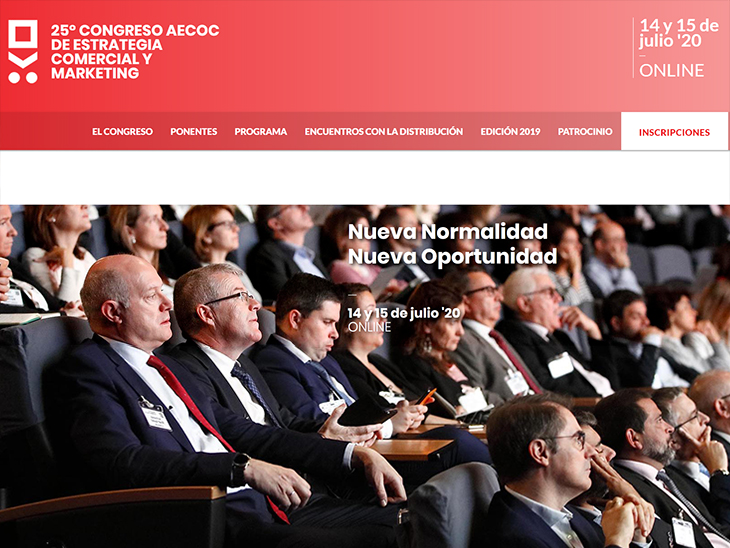25th AECOC Commercial Strategy and Marketing Congress to analyse consumption in remainder of 2020
The 25th AECOC Congress on Commercial and Marketing Strategy will be held virtually between July 14 and 15. This year’s event will analyse the impact of COVID-19 as well as the transformations it has already generated and is expected to generate in mass consumption. Attendees will be presented with analysis of the economic outlook for the second half of the year for the consumer goods sector. Nielsen CEO in Spain and Portugal, Patricia Daimiel, will advance the consumption forecasts for the remainder of 2020 to obtain a complete picture of what impacts COVID-19 will have.
To complete the photograph of the impact on mass consumption, the AECOC Shopperview area will present the first results of its barometer dedicated to COVID-19. It will analyse the main changes in consumer behavior during and after confinement, identify the consolidated trends and predict how buyers will react to different future scenarios, such as possible new confinements in the event of outbreaks.
The programme on the first day will conclude with master-chef Ferran Adrià outlining his vision of the role innovation should play in the new normal.
Online commerce will be the focus of the second day, with an ‘E-commerce and omnichannel’ roundtable discussion and a presentation by IESE professor José Luis Nueno titled: ‘New opportunities from Direct to Consumer (DTC)’. In this intervention, Nueno will analyse the growth of the direct-to-consumer online commerce model, under which more than 6,000 companies operate in the world, thus eliminating intermediaries and creating flexible and externalised supply chain systems. According to the professor, the acceleration of e-commerce during the COVID-19 crisis will advance the DTC revolution.
About AECOC
AECOC is the Association of Manufacturers and Distributors Companies, one of the largest business organizations in the country and the only one in which the industry and consumer goods distribution work together to develop good practices and technological standards that help companies to be more efficient and competitive, adding value to the consumer. It encompasses both the largest companies and small and medium-sized companies and
It represents sectors as diverse as food and beverages, textiles, electro, hardware and DIY, health and hospitality, among others. It has more than 30,000 associated companies whose joint billing represents close to 20% of the national GDP.



